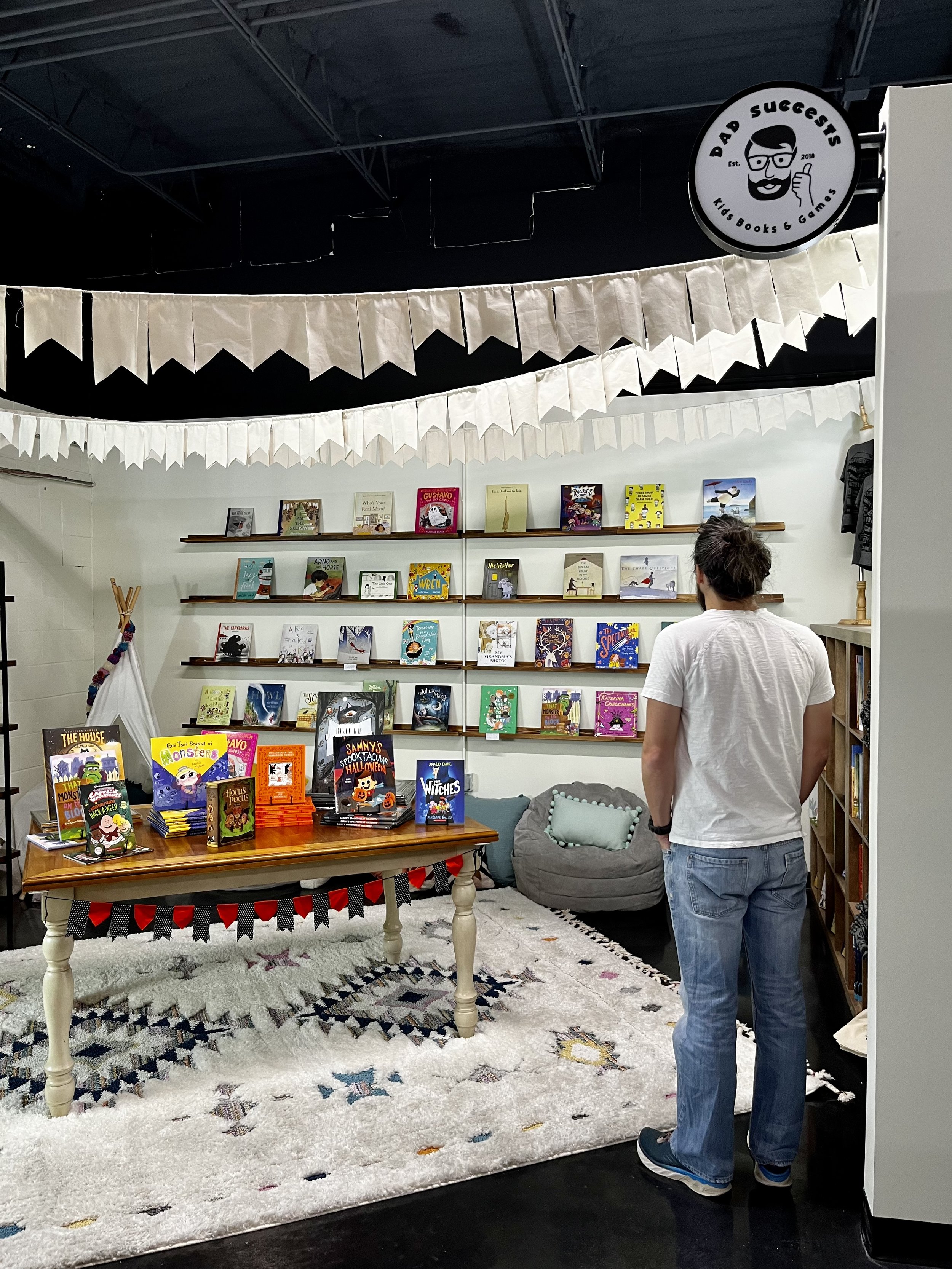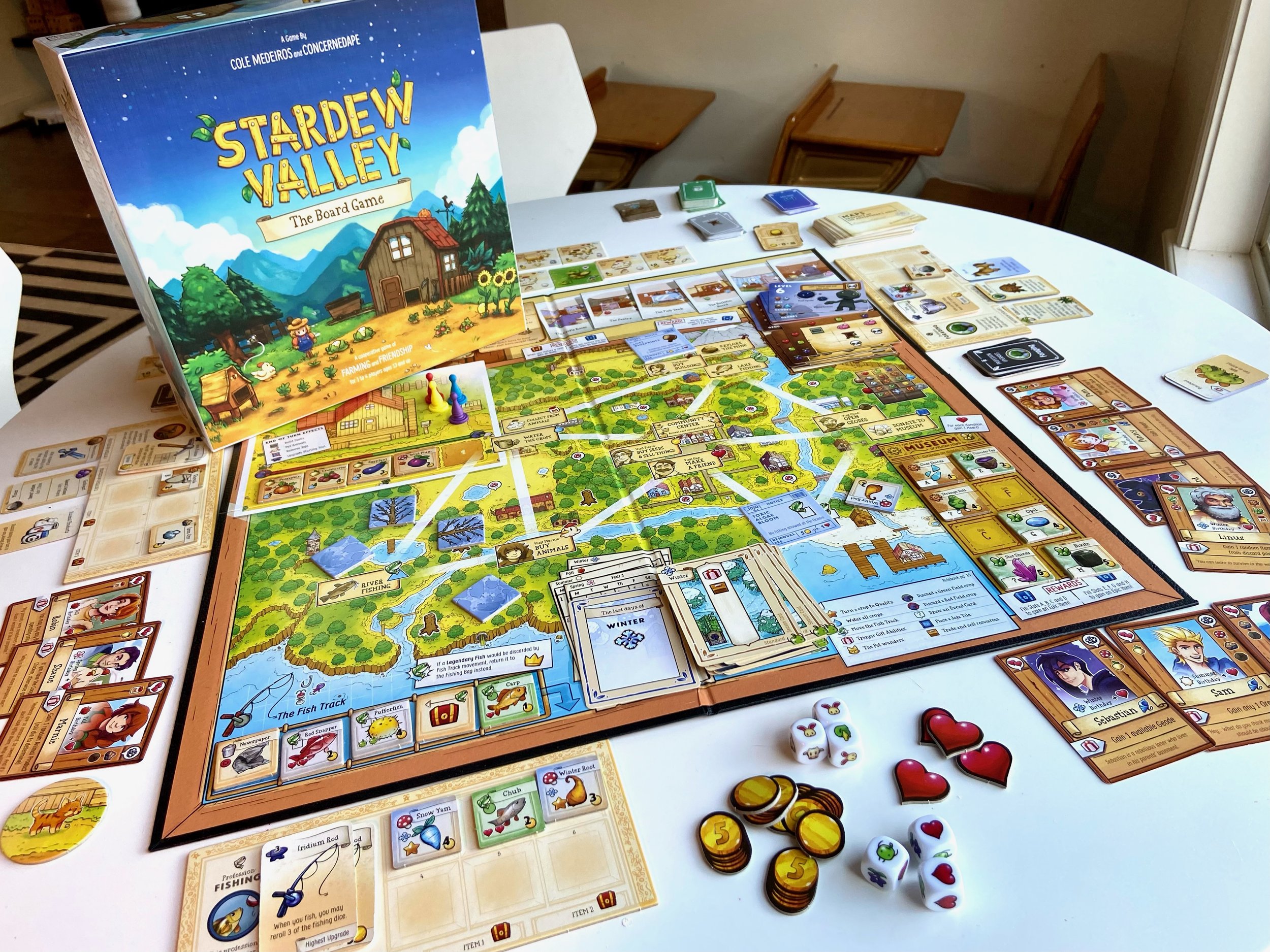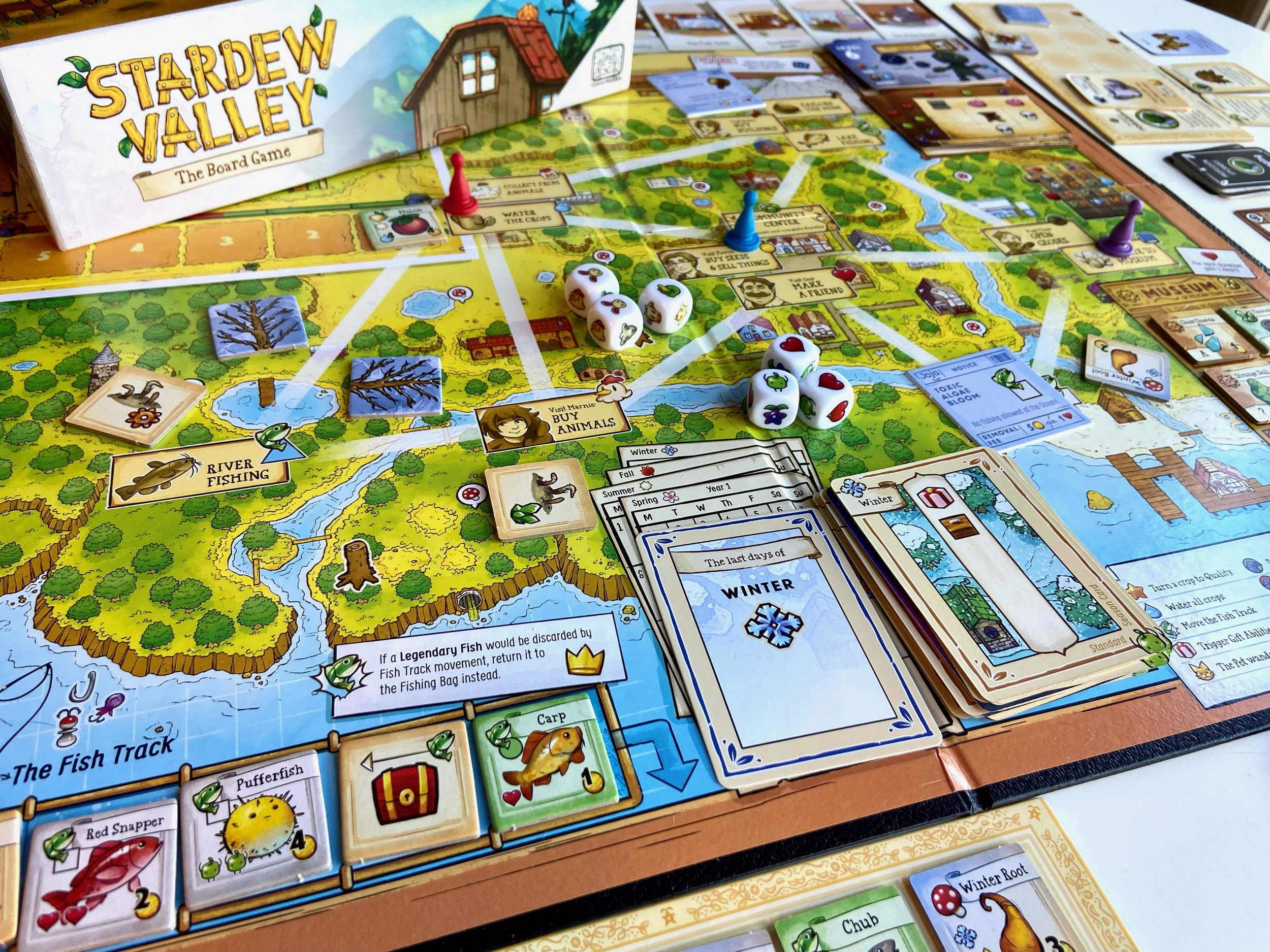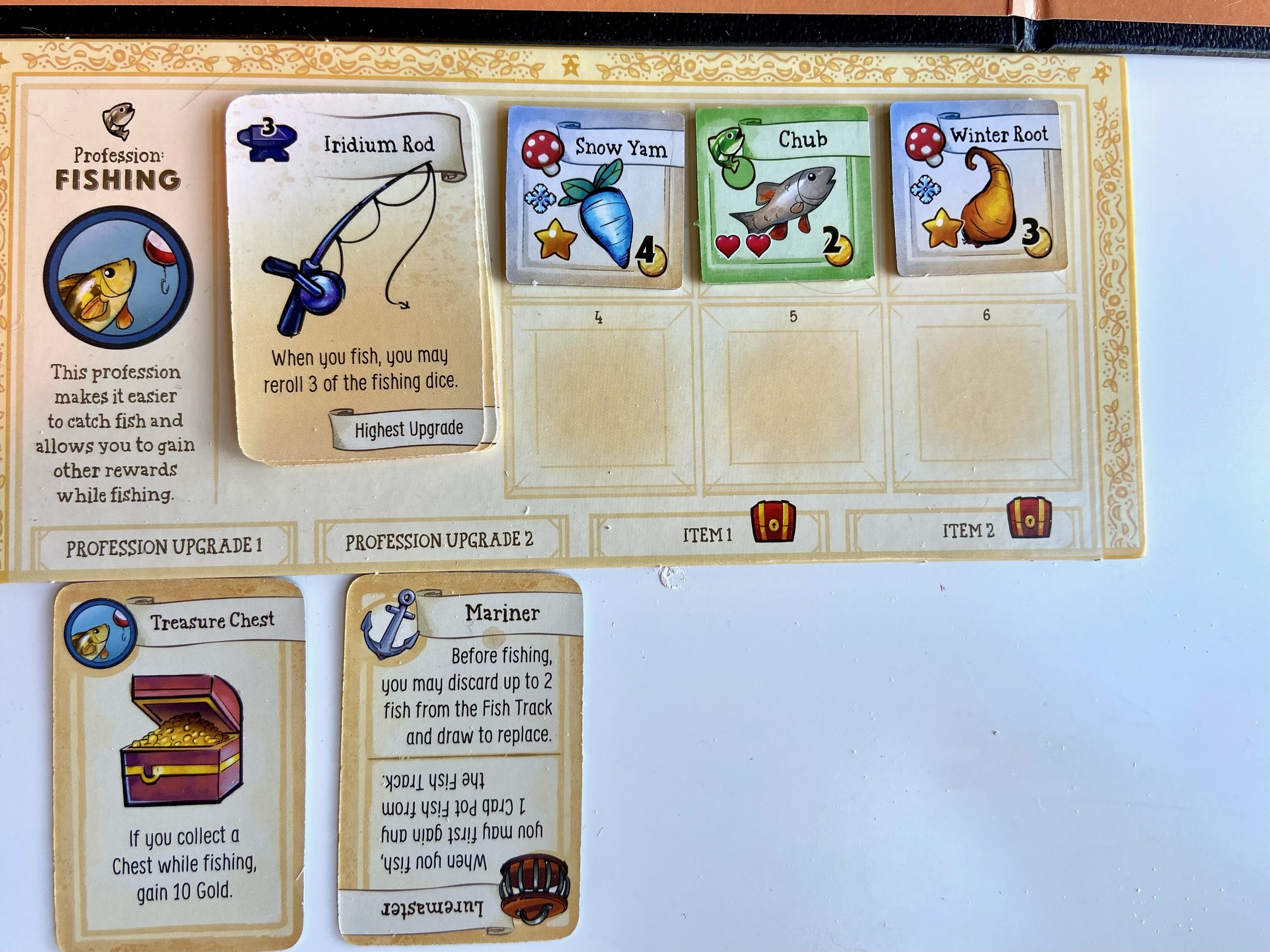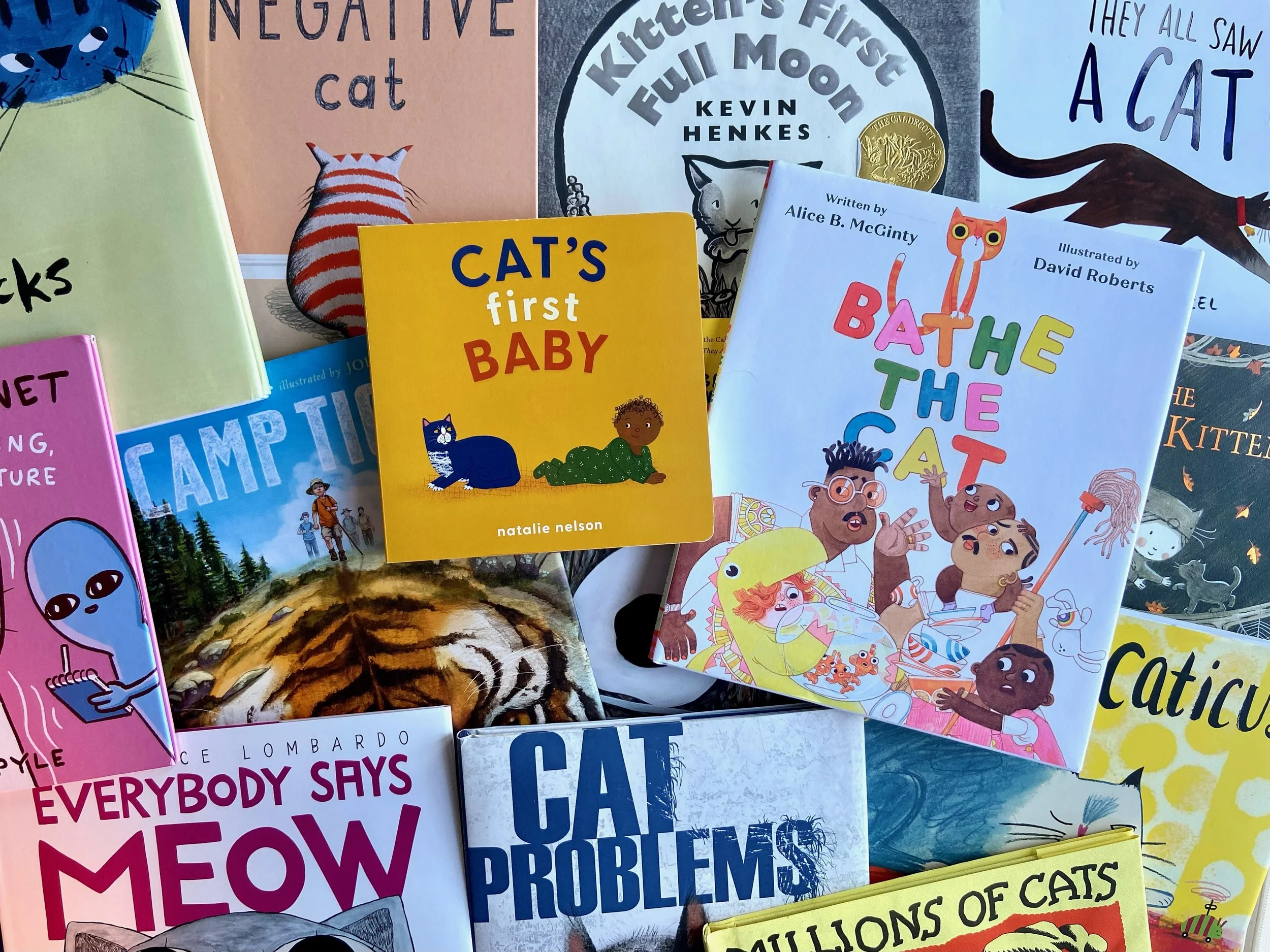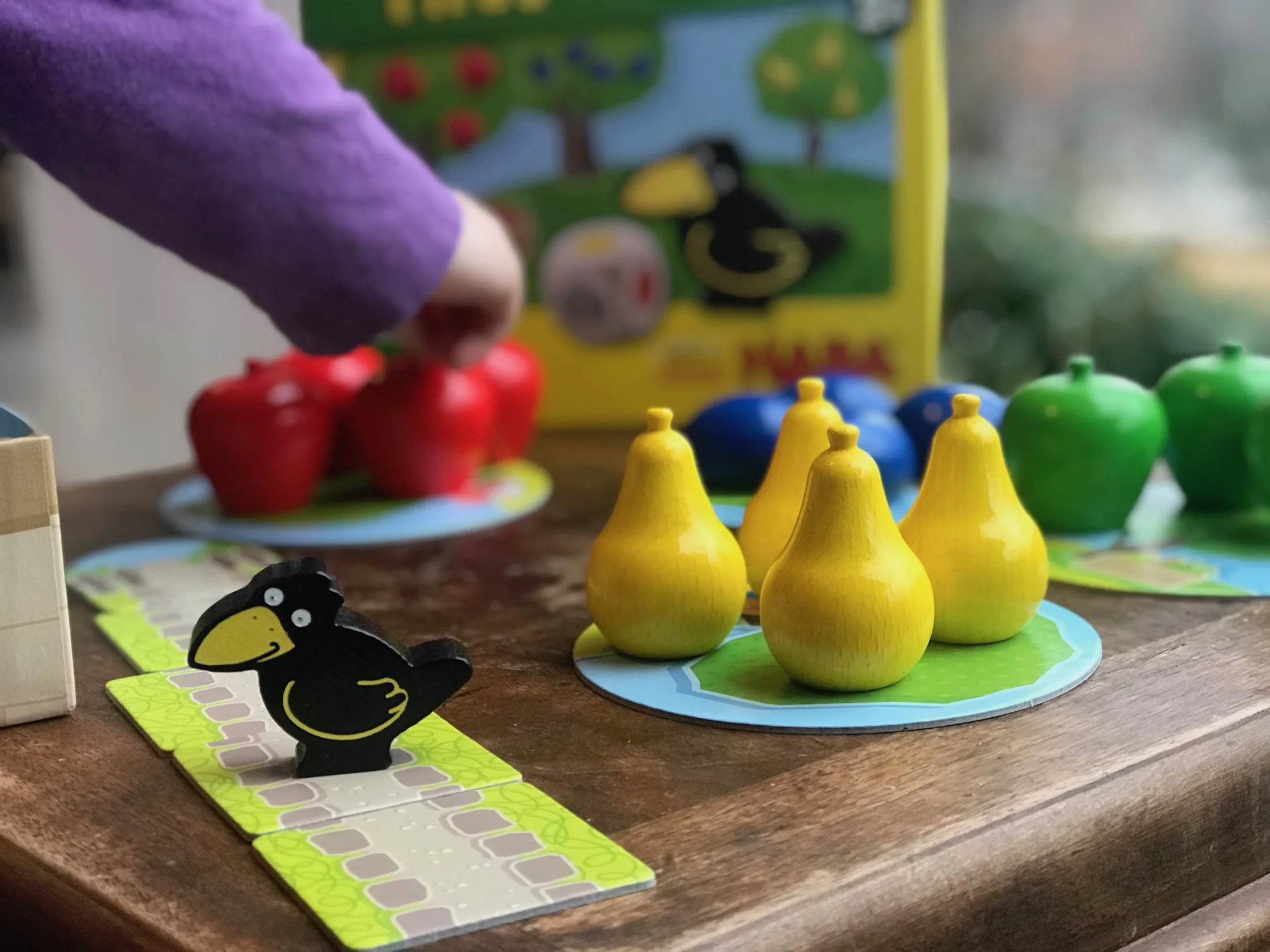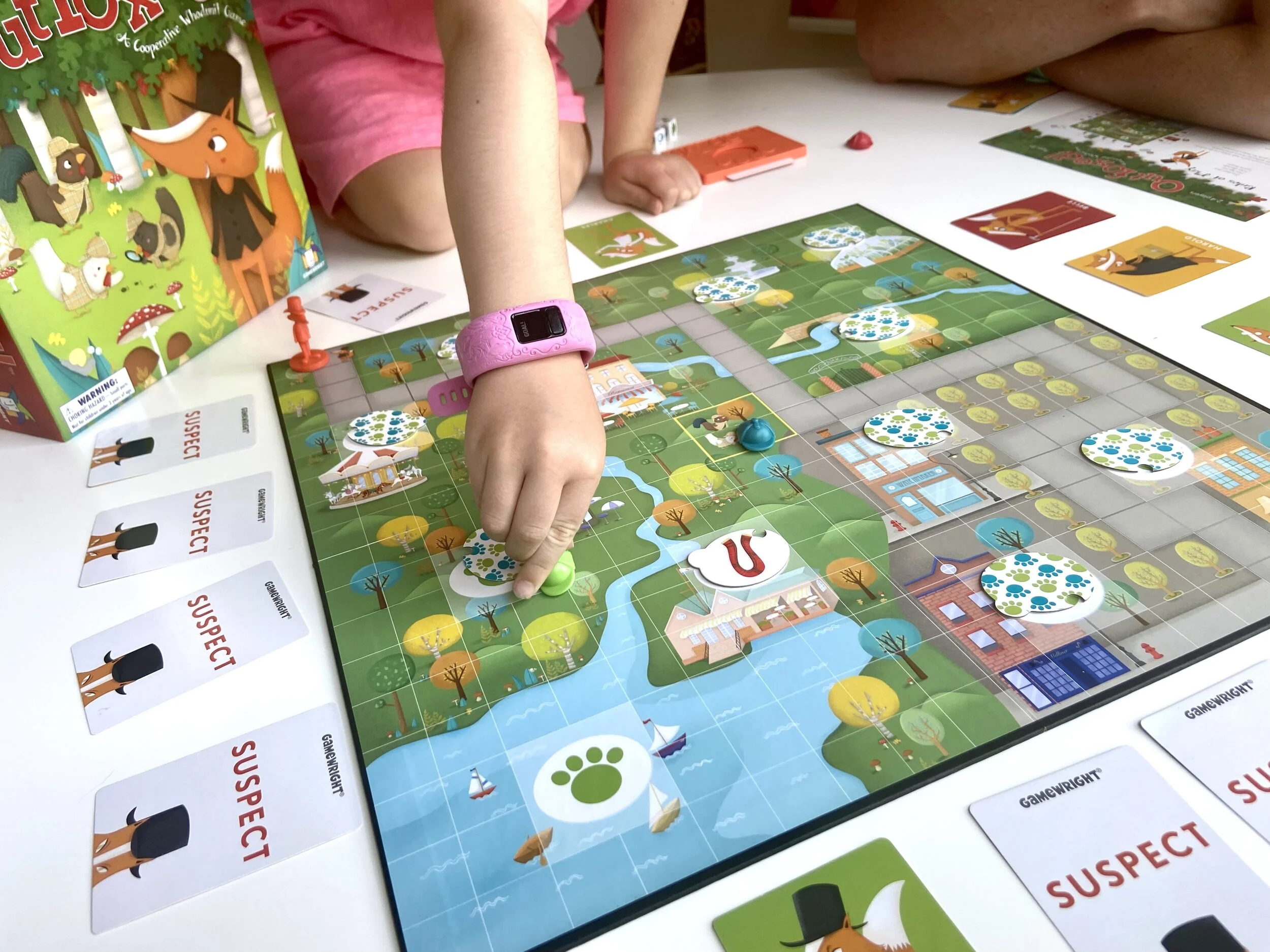Stardew Valley the Boardgame Brings Cooperative Farming Fun to the Table
One of my favorite gaming memories from childhood is how many hours I put into Harvest Moon - both on the SNES and N64. So farming sims have always had a special place in my heart, and I was really excited about Stardew Valley from the very beginning. Like so many people all over the world have discovered, it expertly recreates those memories of Harvest Moon and even improves on many things.
So about two decades after putting all those hours into Harvest Moon, I once again put countless hours into building up a digital farm in Stardew Valley. Games like this have a wonderfully addictive reward loop and a satisfying learning curve. Farming, taking care of your animals, mining, fighting, making friends - with so much to do it’s hard to decide how to spend your days, and that’s part of the fun.
And the funny thing is that several years after I officially hung up my overalls and stopped playing Stardew Valley, my wife and son discovered the game for themselves - and they were soon growing their own farms all day long. And that’s when we discovered that you can now play Stardew Valley on multiplayer, and that changes absolutely everything!
Every once in a while our family finds a special cooperative game - whether it’s a video game or a board game - that provides a truly memorable experience for the whole family. Growing that digital farm together - each of us on our own Nintendo Switch - is definitely one of those memorable experiences. Playing Stardew Valley with family and friends is the definitive way to play, and I’ll probably remember that time we were all obsessed with the game forever.
And I mention all of this simply to set the stage for how excited I was to see that Stardew Valley was getting it’s own board game - and it’s a cooperative game! How brilliant is that? And, trust me, that’s not the only game design choice that they got right by any means. Every single detail about this board game pays tribute to the video game in the most perfect way - and I think we’ve ended up with just about the perfect crossover project.
Fans of Stardew Valley will appreciate the loving details in this game. Winning the game involves completing Grandpa’s missions as well as finishing the community center. The game features farming, mining, fishing, making friends - even getting married. It’s truly all here, all the way down to the changing of the seasons, the crops, and the forageable items. You can even crack open geodes and donate to the museum. (And now I promise I will try to cool it on geeking out so much.)
There is also a ton of replay value because Grandpa’s goals and the community center bundles are randomized - which also forces you into different strategies every time. And that will influence whether or not you want to focus your days on fishing, mining, or farming. Our son was always a fan of going down into the mines in the video game, so it’s adorable and endearing that he gets to focus on that in the board game too. And, personally, I’m generally happy to focus on fishing myself.
It’s also very cute to see how dedicated he is to his virtual wife - Emily - the character he married in the video game. He was very much hoping to draw her card during an attempt to make a new friend at Gus’ tavern. And he wanted to keep a mineral in his inventory to gift to her, because that’s the gift she likes the most in the video game. Alas, he hasn’t drawn her yet - but one day!
How to Play Stardew Valley the Board Game
Stardew Valley the Board Game is a worker-placement game. You can perform 2 actions on each turn, and you have to decide where to place your character before the turn begins. Are you going to spend this turn buying new seeds from Pierre? Are you going to descend into the mines? Buy new animals? Fish in the ocean? Obviously a lot of the strategy comes from planning out your turns, and a lot of the charm comes from the plethora of familiar choices at your disposal.
Gold and hearts (two kinds of currency in the game) can be shared by everyone in this game, and you get a chance to trade around items in your inventory before every turn. Once again, this is where a lot of planning comes into play. If someone is going to go break open some geodes or donate some items, it makes sense to give them all of your geodes and donations before the turn starts.
Once you understand all of the actions you can perform, all you have to do is focus on the goals you’re trying to accomplish. And make sure to get them done before the last day of winter! Each season has 4 days - which also feature random events each time you play - so you have 16 rounds to try and win the game and keep the evil Joja Corporation out of town!
Who Can Play Stardew Valley the Board Game?
Officially the game is recommended for ages 13+, but our 9-year-old didn’t have any trouble at all. He does have a lot of experience playing games, but I honestly believe a big part of the recommended age comes from the length of the game, not the difficulty. In my opinion, the difficulty is placed entirely on the shoulders of the person who has to digest the rule book. Understanding how to do your turn for kids is no problem at all if you have an adult at the table that knows all the rules.
But, like I said, stamina might be the issue for some. Plenty of kids might be deterred by the 45 minutes or so per player. That means it takes about 2 hours for the 3 of us to play together, so you can be the judge of your own attention spans! And it makes a huge difference if they are already a big fan of the Stardew Valley universe. The buy-in and excitement about the familiarity payed enormous dividends with our son (and honestly all of us).
I also appreciate that this game can be played with up to 4 players, or even solo. It’s easy to change the number of players without messing with the difficulty, because every goal in the game simply scales with the number of players. And in our experience, the balance is spectacular. In fact, in our first playthrough, we literally won the game, with a tiny bit of luck, on the very last possible turn of the game.
It was beautiful. We knew we needed just one more item donated to Gunther at the museum to win the game. And we planned our final turns to give ourselves several chances at finding the required item. But they all failed! And then on the very final turn of the game, my wife donated to the community center - completing the last 3 rooms in the community center all at once, and drawing 3 items. One of the items allowed her to draw one final artifact, and it was one we needed! She donated it to Gunther, completing Grandpa’s final mission, and we gave lots of excited high fives all around.
There are very few games in our board game collection that we are willing to spend 2 hours on. Almost all of our games are light weight family games that last less than 30 minutes, but Stardew Valley is a special case for us. And not only that, but it also fits into the relatively rare category of games that I’m immediately excited about playing again. The cooperation, the memories it evokes, and the brilliance of the design all add up to a special experience for this family.
Right now the only place to find Stardew Valley the Board Game online is on the official Stardew Valley website.
Do you have any Stardew Valley fans in your house? Have you started a family farm together yet - either in the video game or the board game? Let us know in the comments!
